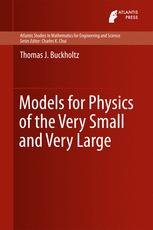

Most ebook files are in PDF format, so you can easily read them using various software such as Foxit Reader or directly on the Google Chrome browser.
Some ebook files are released by publishers in other formats such as .awz, .mobi, .epub, .fb2, etc. You may need to install specific software to read these formats on mobile/PC, such as Calibre.
Please read the tutorial at this link: https://ebookbell.com/faq
We offer FREE conversion to the popular formats you request; however, this may take some time. Therefore, right after payment, please email us, and we will try to provide the service as quickly as possible.
For some exceptional file formats or broken links (if any), please refrain from opening any disputes. Instead, email us first, and we will try to assist within a maximum of 6 hours.
EbookBell Team

4.1
100 reviewsThis monograph tackles three challenges. First, show a mathematics-based meta-model that matches known elementary particles. Second, apply models, based on the meta-model, to match other known physics data. Third, predict future physics data. The math features solutions to isotropic pairs of isotropic quantum harmonic oscillators. This monograph matches some solutions to known elementary particles. Matched properties include spin, types of interactions in which the particles partake, and (for elementary bosons) approximate masses. Other solutions point to possible elementary particles. This monograph applies the models and the extended particle list. Results narrow gaps between physics data and theory. Results pertain to elementary particles, astrophysics, and cosmology. For example, this monograph predicts properties for beyond-the-Standard-Model elementary particles, proposes descriptions of dark matter and dark energy, provides new relationships between known physics constants (including masses of some elementary particles), includes theory that dovetails with the ratio of dark matter to ordinary matter, includes math that dovetails with the number of elementary-fermion generations, suggests forces that govern the rate of expansion of the universe, and suggests additions to and details for the cosmology timeline.